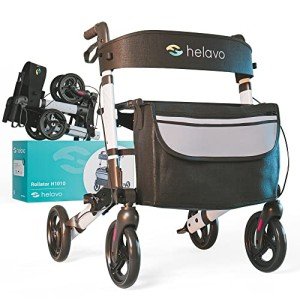The Comprehensive Guide to Padded Seat Walkers: Comfort and Mobility Combined
Mobility difficulties are a part of life for numerous people, whether due to age, injury, or various health conditions. As a solution, the padded seat walker has emerged as a popular assistive gadget that not only help in mobility but likewise uses a resting choice. This guide will explore the features and benefits of padded seat walkers, some considerations for selecting one, and far more.
What is a Padded Seat Walker?
A padded seat walker, likewise called a rolling walker or rollator, is a wheeled mobility aid geared up with a padded seat for resting. These gadgets usually have four wheels, handlebars, and a seat that permits users to navigate their environments safely while supplying an area to sit and recover when required. The walker is especially advantageous for individuals who find themselves fatigued throughout extended walking or those who require additional support and stability.
Secret Features of Padded Seat Walkers
Here is an extensive list of key features to consider when choosing a padded seat walker:
| Feature | Description |
|---|---|
| Padded Seat | Supplies convenience throughout rest, typically with back support to ease sitting. |
| Wheels | Usually four wheels for stability and ease of motion, often with locking mechanisms. |
| Handles | Ergonomic and adjustable handles that deal with various user heights. |
| Brakes | Easy-to-use brake systems that boost safety and control while walking or resting. |
| Storage Options | Typically consists of a basket or pouch to carry personal items firmly. |
| Lightweight Frame | Developed for ease of transport and handling, normally made from aluminum or steel. |
| Mobility | Some designs fold for easy storage and transport, ideal for travel. |
Advantages of Using a Padded Seat Walker
A padded seat walker can considerably improve the quality of life for users. Here are several advantages:
- Safety and Stability: A padded seat walker offers additional support, lowering the threat of falls and injuries.
- Convenience: With a built-in seat, users can take breaks as needed without searching for a location to rest.
- Enhanced Mobility: Walkers motivate movement and expedition, promoting self-reliance and encouraging a much healthier lifestyle.
- Convenience: Padded seats and ergonomic deals with are developed to provide comfort throughout usage, minimizing pressure on the body.
- Easy to use: These walkers are frequently easy to use with minimal training, making them available for a broad variety of users.
Choosing the Right Padded Seat Walker
When picking a padded seat walker, consider the following aspects:
1. Size and Weight Capacity
It's important to select a walker that accommodates the user's size and weight. Inspect the weight restricts defined by the manufacturer and guarantee the walker provides appropriate stability.
2. Adjustability
Try to find models with adjustable manages to tailor the walker height for convenience and safety. This feature is especially crucial for users of differing heights.
3. Seat Height and Comfort
Make sure that the seat height is appropriate for the user. A comfortable padded seat with back support will enhance the resting experience.
4. Wheel Type
Wheels come in different sizes and designs. Bigger wheels may perform better on irregular surfaces, while smaller wheels are much easier to maneuver indoors.
5. Additional Features
Think about additionals such as built-in storage, brake systems, and security features. Advanced designs might consist of devices like cup holders or back-rests.
How to Use a Padded Seat Walker
For optimum benefit and security, users need to be aware of proper strategies:
- Adjust the Walker: Set the walker to the proper height, guaranteeing that the user can comfortably grip the handlebars while standing directly.
- Test Mobility: Before advance, users must ensure the brakes are disengaged and the walker is stable.
- Preserve Posture: Engage core muscles and keep a straight posture while walking. mouse click the following web site must keep their weight focused over the walker.
- Take Breaks: If feeling fatigued, the user can stop, engage the brakes, and rest on the padded seat to rest.
- Store Items Securely: Place individual possessions in the walker's storage compartment to avoid carrying additional weight.
Often Asked Questions (FAQ)
Q1: Who can gain from using a padded seat walker?
A1: Padded seat walkers are useful for elderly people, those recovering from surgical treatment, or anybody with mobility issues who needs support while walking.
Q2: How do I figure out which size walker to get?
A2: Consider the user's height and weight, and check the walker requirements for weight limits and size recommendations.
Q3: What is the typical lifespan of a padded seat walker?
A3: With appropriate care and maintenance, padded seat walkers can last a number of years, usually between 5 to 10 years.
Q4: Can I utilize a padded seat walker outdoors?
A4: Yes, lots of padded seat walkers appropriate for outdoor usage, supplied they have actually appropriate wheels designed for numerous surface areas.
Q5: How do I keep a padded seat walker?
A5: Regularly check the brakes and wheels for wear, clean the frame, and guarantee that all parts are functioning correctly for safety.
Final Thoughts
Padded seat walkers represent an important resource in promoting self-reliance and mobility for those facing physical obstacles. By providing convenience, stability, and safety, they help boost the quality of life for users. If you or a loved one are considering a padded seat walker, this detailed guide ought to assist in making an educated choice. Accepting mobility aids can result in a fulfilling and active way of life, showing that ease of motion is achievable at any age or condition.

